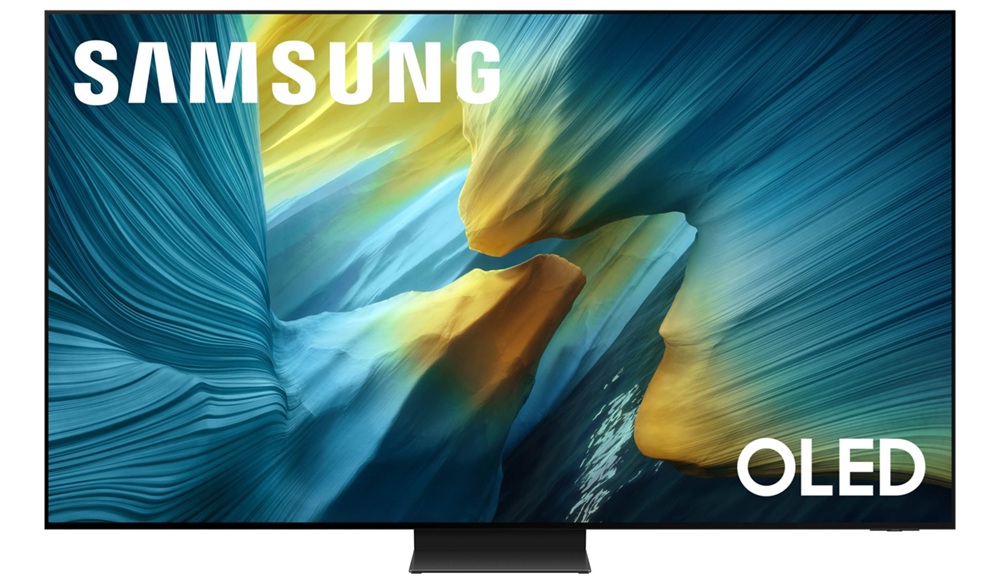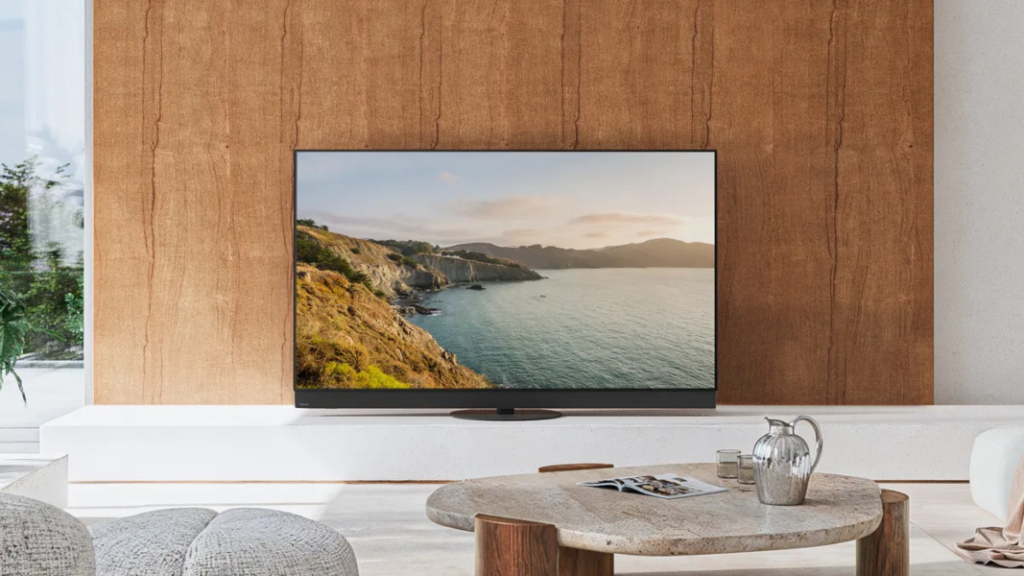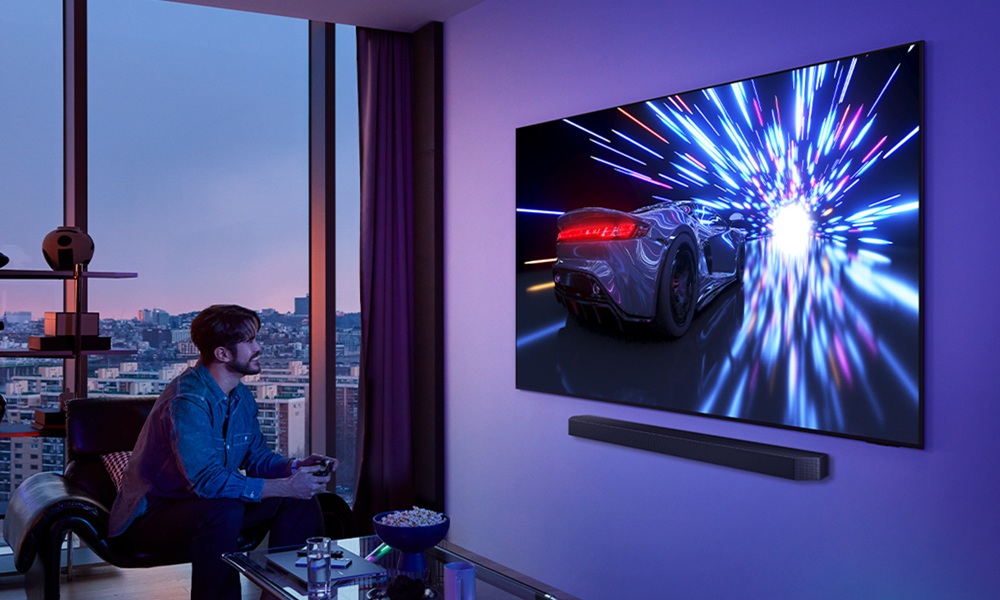OLED TVs are becoming hugely popular, with the category among the most in-demand display technologies on the market, according to industry researchers.
As OLED panel technology continues to evolve, major TV manufacturers are pushing the limits of brightness, color accuracy, and gaming performance in their latest flagship models. For 2025, brands like Samsung, LG, Sony, Panasonic, and Philips are introducing new OLED TVs equipped with advanced processors, high refresh rates, and cutting-edge features designed to enhance both cinematic and gaming experiences.
Here’s a look at how each company is positioning its newest OLED offering in the competitive premium TV market.
List of OLED TVs
- Samsung S95F OLED
- LG OLED evo G5
- Sony BRAVIA 8 II QD-OLED
- Panasonic Z95B OLED
- Philips 65-Inch 974 OLED Roku TV
Samsung S95F OLED

Samsung’s 2025 flagship OLED TV is the S95F, featuring the company’s latest OLED Glare-Free technology, designed to reduce reflections from sunlight and ambient lighting. The TV incorporates what Samsung says is its brightest OLED panel to date, combined with OLED HDR Pro, to enhance contrast and color accuracy in a variety of lighting conditions.
The S95F is powered by the NQ4 AI Gen3 Processor, which adjusts contrast, brightness, depth, and color scene-by-scene and supports 4K upscaling. For gaming applications, the display includes Motion Xcelerator 165Hz for smooth, responsive performance.
The S95F is currently available in 55″, 65″, and 77″ models, with an 83″ version set to release soon. MSRP: $2,299 (55″), $3,299 (65″), $4,499 (77″).
LG OLED evo G5
LG’s says its new OLED evo G5 TV features a 45% increase in brightness compared to the previous generation, enabled by Brightness Booster Ultimate and the updated Alpha 11 AI Processor Gen2. The G5 is certified for Perfect Black and Perfect Color, with additional enhancements for both home cinema and gaming environments.
The TV runs on the webOS 25 smart platform and supports Filmmaker Mode with Ambient Light Compensation, Dolby Vision, Dolby Atmos, and AI Sound Pro. It also supports gaming features including 4K 165Hz VRR, NVIDIA G-SYNC, and AMD FreeSync Premium.
Available in 55″, 65″, 77″, 83″, and 97″ sizes. Pricing starts at $2,499 for the 55” model and tops out at $24,999.99 for the 97” version.
Sony BRAVIA 8 II QD-OLED
Sony’s says its 2025 flagship TV is the BRAVIA 8 II, its latest QD-OLED TV, equipped with the XR Processor and XR Triluminos Max for expanded color reproduction. The model is designed to deliver high fidelity and realism, aligning with Sony’s goal of reflecting the creator’s original intent.
According to Sony, the display integrates XR Contrast Booster and a high-luminance panel for improved brightness control and shadow detail. Sony’s Acoustic Surface Audio technology allows the screen itself to function as a speaker for synchronized audio output.
Available in 55” and 65” for $3,499.99 and $3,999.99, respectively.
Panasonic Z95B OLED

Panasonic says its 2025 Z95B OLED is its most advanced model to date, featuring a new RGB Tandem Panel and proprietary ThermalFlow cooling system to enhance brightness and color performance. The set is powered by the HCX Pro AI Processor MK II and supports Dolby Vision IQ, Fire TV, and professional calibration standards including Calman and ISFccc.
According to the company, the audio system, 360° Soundscape Pro, is tuned by Technics and supports Dolby Atmos. Gaming features include a 144Hz refresh rate, ultra-low input lag, FreeSync Premium, and G-SYNC.
The Z95B OLED will come in 55″, 65″, and 77″ sizes. Pricing is not yet available.
Philips 65-Inch 974 OLED Roku TV
Philips has launched the 65OLED974/F7, a 65-inch OLED Roku TV that combines 4K UHD resolution with Dolby Vision IQ, HDR10, and over 8 million dimming pixels for improved black levels and contrast. The TV includes integrated support for Roku OS, providing access to a range of streaming services.
Additional features include 120Hz native refresh rate, AMD FreeSync Premium for gaming, and voice assistant compatibility with Alexa, Google Assistant, and Apple HomeKit. The TV also includes Dolby Atmos 2.1-channel audio and a borderless design.
Available in only 65” model for $1,299 exclusively at Sam’s Club, but pricing may differ online and in store.
Is an OLED TV Really Better?
With so many different types of TVs on the market, it can be hard to decide which one will work the best for home entertainment. The best OLED TVs can offer the deepest blacks and most vibrant colors while also being able to create sharp contrasts between the images on the TV with minimal bleed between each diode.
However, because of their organic nature, OLED TVs do have a greater susceptibility to burn-in, in addition to having lower peak brightness compared to other TVs. If price is a concern, OLED TVs are also higher on the cost spectrum.
What about QLED, mini-LED, or microLED, though? We dive deep into the differences between OLED vs QLED technology as well as OLED vs microLED to help better explain the strengths (and weaknesses) of these different display technologies when it comes to home entertainment.







